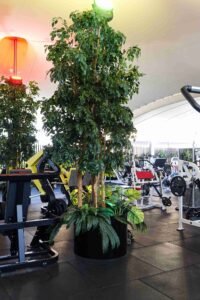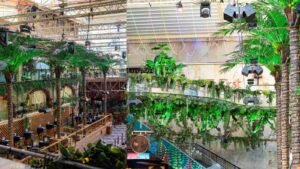Urban greening in South America faces serious challenges: real trees are costly, maintenance-intensive, and can negatively impact natural ecosystems. Could China's artificial trees provide the answer?
Chinese-made artificial trees support sustainable urban development by offering eco-friendly alternatives with recyclable materials, low-carbon production methods, and helping reduce deforestation pressures, balancing aesthetics and circular economy objectives effectively.
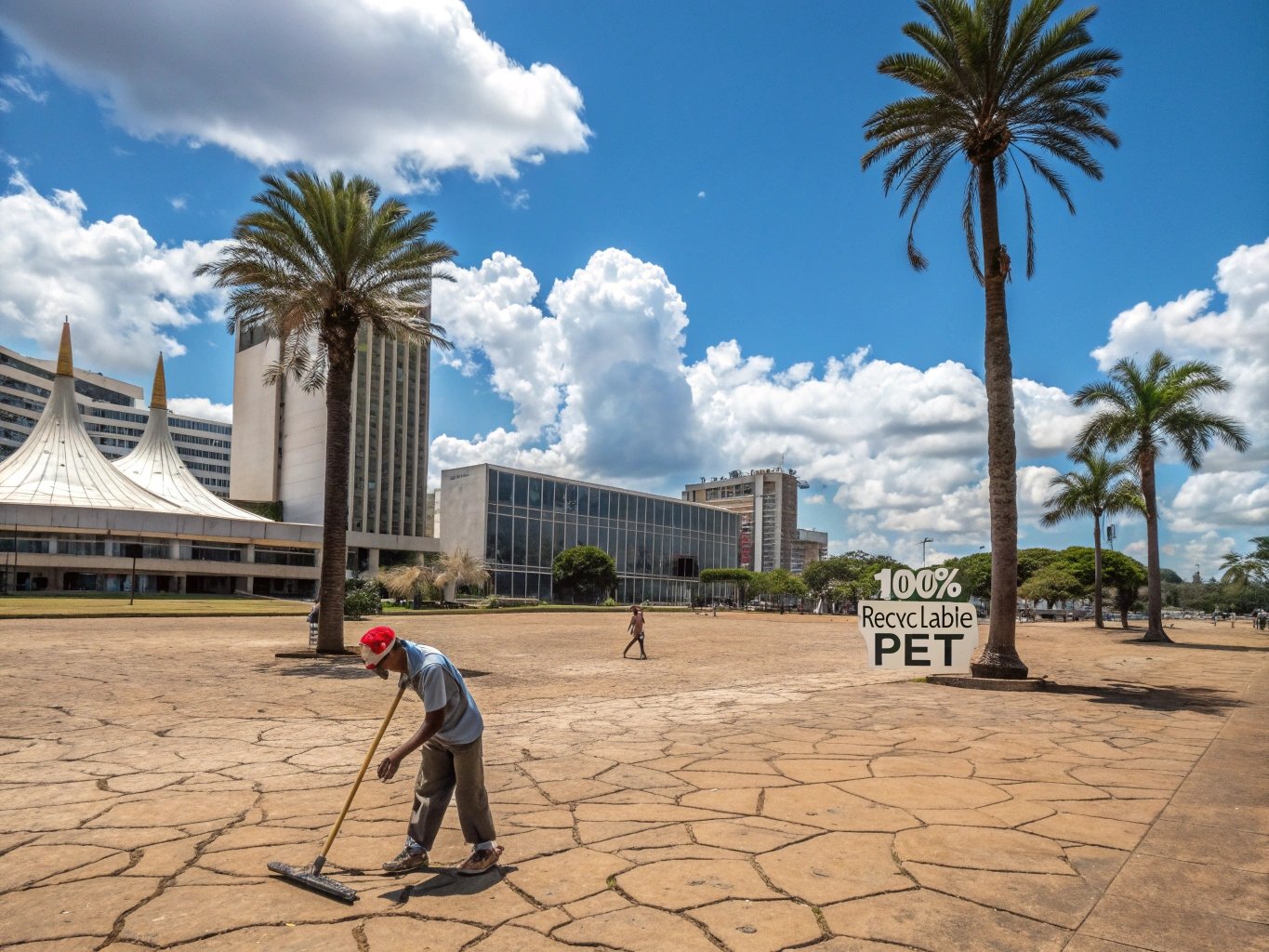
More South American cities are seeking sustainable and practical solutions for urban greening. Below, I explore how artificial trees from China can support these eco-conscious efforts.
Why Are South American Cities Turning to Eco-Friendly Alternatives for Urban Greening?
Natural trees are beautiful but managing urban greenery poses many problems: maintenance is expensive, irrigation demands high water usage, and unsuitable species can harm local biodiversity. These challenges push cities to find better, greener options.
South American cities embrace eco-friendly alternatives like artificial trees to reduce water usage, decrease maintenance costs, improve long-term durability, and create greener urban spaces sustainably, without negatively impacting local ecosystems.

Understanding the Shift Towards Artificial Alternatives
City planners face constant pressure to keep urban spaces appealing yet environmentally responsible. Real trees require ongoing water and maintenance, straining limited urban resources. South American cities, frequently facing drought conditions, cannot afford large-scale irrigation systems. Artificial trees provide a viable solution by eliminating water usage entirely. Below, I illustrate the comparison clearly:
| Issue | Real Trees | Artificial Trees |
|---|---|---|
| Water Usage | High irrigation demands | No water needed |
| Maintenance | Frequent pruning, care | Minimal to none |
| Durability | Vulnerable to disease/weather | Highly resistant & durable |
| Biodiversity Impact | Potential invasiveness | No impact |
Cities like São Paulo, Buenos Aires, and Santiago actively explore artificial landscaping to meet eco-conscious goals. The artificial trees I produce at Oakco use UV-resistant materials to ensure longevity, especially crucial in South America's intense sunlight conditions. By choosing artificial alternatives, urban planners can design greener spaces without ecological drawbacks, reinforcing sustainability at a manageable cost.
Can Recyclable Materials in Chinese Artificial Trees Redefine Sustainable Landscaping?
Landscaping materials often cause significant waste, harming the environment. Most traditional landscaping uses non-renewable materials, making recycling difficult. Could recyclable artificial trees from China offer a solution?
Yes, recyclable materials in Chinese artificial trees are redefining sustainable landscaping by significantly reducing environmental impacts, promoting waste reduction, and aligning landscaping practices with global sustainability goals effectively.
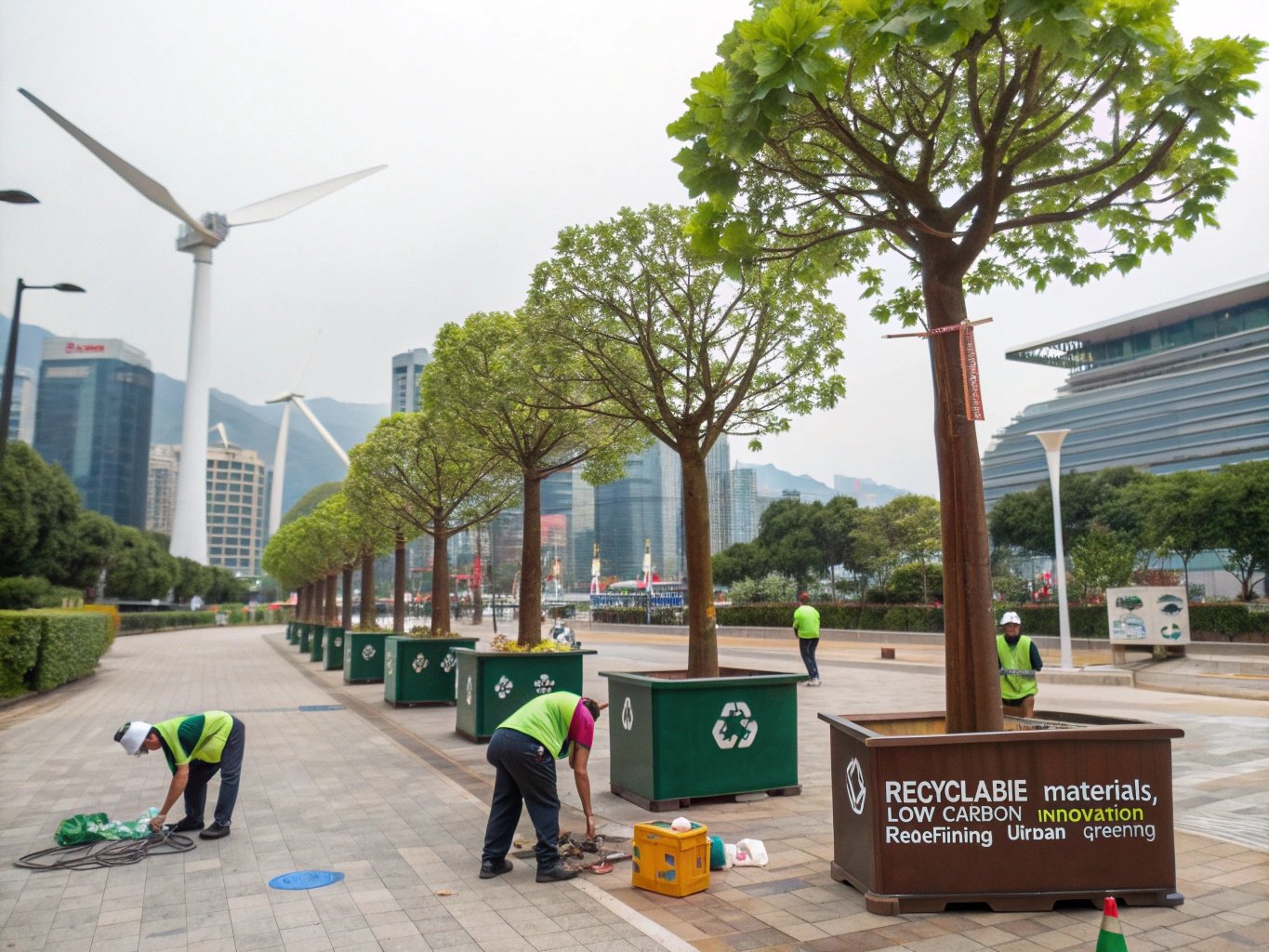
Recyclability and Sustainability: Breaking Down the Materials
At Oakco, sustainability is central to our production. Our artificial trees use materials like recyclable polyethylene (PE) and polypropylene (PP), which significantly lower environmental impact compared to traditional materials.
Let's compare clearly:
| Material Type | Environmental Impact | Recycling Potential |
|---|---|---|
| Polyethylene (PE) | Low, eco-friendly | Highly recyclable |
| Polypropylene (PP) | Moderate to low | Easily recyclable |
| PVC (traditional) | High, toxic additives | Difficult recycling |
By utilizing these recyclable materials, cities can confidently integrate our artificial trees into their sustainability plans. Local governments and businesses in South America aiming for circular economy goals can reuse or repurpose these materials. As a supplier, Oakco provides detailed recycling guidelines, enabling customers to responsibly manage artificial trees at their life’s end, significantly reducing landfill waste.
How Does Low-Carbon Production Enhance the Appeal of China's Simulation Trees?
Urban development often contributes heavily to carbon emissions. Traditional landscaping production methods can worsen the situation. Could low-carbon manufacturing of artificial trees enhance sustainability?
Low-carbon production methods used by Chinese manufacturers, including energy-efficient factories and reduced emissions processes, significantly enhance the appeal of artificial trees for cities focused on lowering their carbon footprints.

Reducing Carbon Emissions in Manufacturing
At Oakco, we have invested heavily in low-carbon production technology. Our factories use renewable energy sources, such as solar power, significantly reducing greenhouse gas emissions. Here's a clear comparison:
| Production Aspect | Traditional Manufacturing | Low-Carbon Production at Oakco |
|---|---|---|
| Energy Sources | Fossil fuels | Solar and renewable energies |
| Carbon Emissions | High | Reduced by over 40% |
| Waste Management | Limited recycling | Comprehensive recycling policy |
Cities in South America committed to sustainability value partners who align with their environmental priorities. By choosing artificial trees manufactured through low-carbon methods, urban planners and businesses effectively reduce their indirect carbon footprint, aligning closely with environmental targets and public perception.
What Role Do Chinese Manufacturers Play in Reducing Deforestation Pressures in South America?
Deforestation is a critical problem in South America, leading to biodiversity loss and environmental degradation. Urban greening, ironically, can sometimes increase pressure on natural forests. Can artificial trees ease this pressure?
Chinese manufacturers significantly reduce deforestation pressures by providing realistic artificial alternatives, eliminating the need for logging natural trees, thus preserving South America's precious natural forests and biodiversity.

Impact on Deforestation: Artificial vs. Natural Trees
Artificial trees directly address the root cause of urban-driven deforestation. Natural urban landscaping relies heavily on timber harvesting. By supplying realistic artificial alternatives, companies like Oakco help cities avoid cutting down valuable forest resources. Here is the impact clearly explained:
| Impact Area | Natural Trees | Artificial Trees |
|---|---|---|
| Deforestation | High timber demand | No timber demand |
| Biodiversity Preservation | Negative impact | No negative impact |
| Resource Conservation | Unsustainable harvesting | Zero natural resource extraction |
In providing realistic, durable alternatives, artificial trees directly lessen the pressures on South America's forests. This effectively allows cities to pursue urban greening initiatives without ecological harm, protecting regional biodiversity and supporting broader environmental conservation goals.
Are Artificial Trees the Key to Balancing Aesthetics and Circular Economy Goals?
Cities struggle with combining beautiful urban landscapes and sustainable development goals. Is using artificial trees a realistic solution?
Artificial trees provide the ideal solution for balancing aesthetics with circular economy goals due to their long-lasting, reusable, and recyclable nature, supporting attractive, sustainable urban landscapes without negative environmental impact.
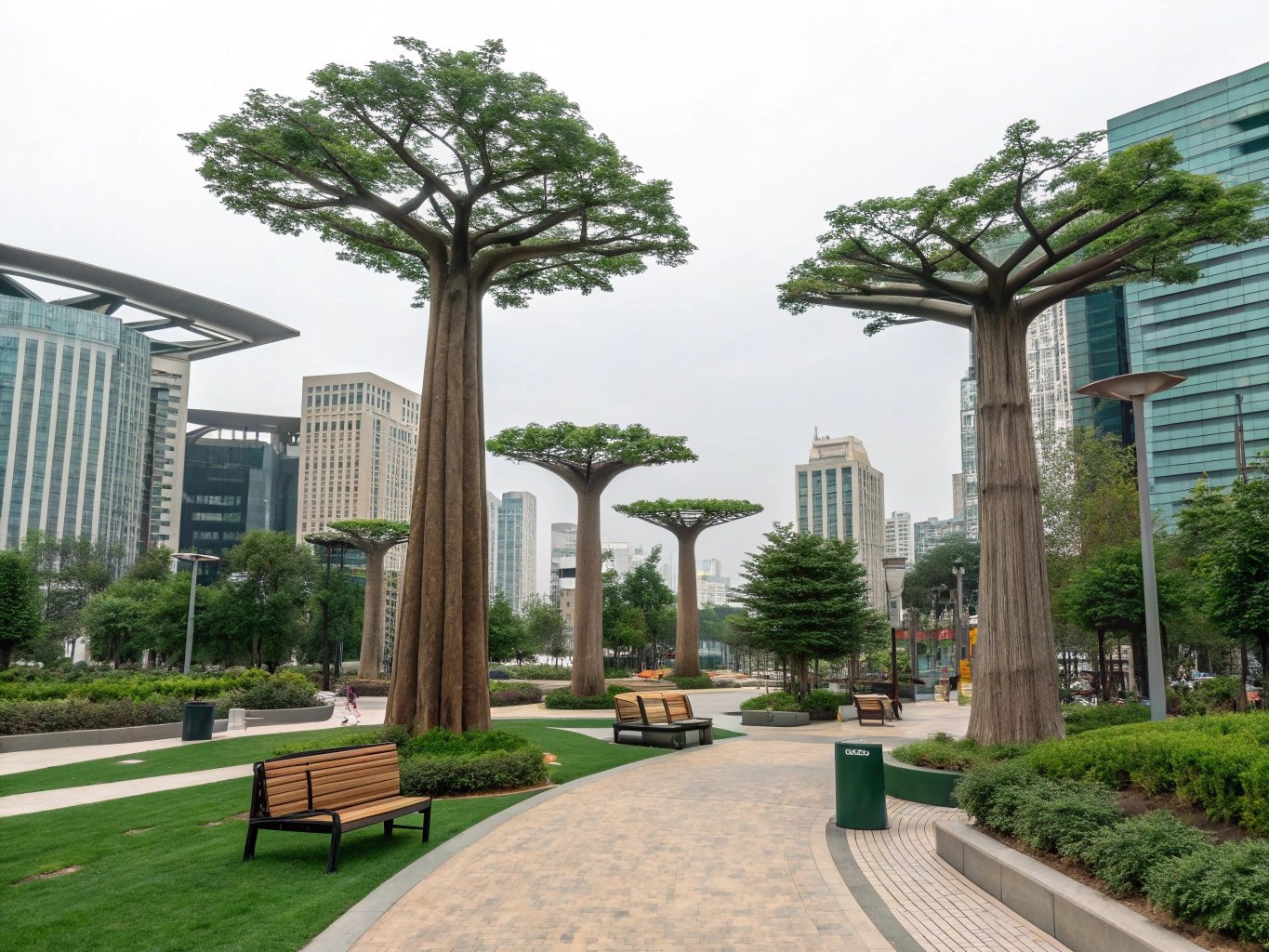
Balancing Beauty and Sustainability Clearly
Artificial trees from Oakco seamlessly blend aesthetic quality and sustainability. Our trees look realistic, and we offer customizable options like color, shape, and size to meet specific urban design requirements. Additionally, their recyclability aligns perfectly with circular economy principles:
| Circular Economy Aspect | Natural Trees | Artificial Trees (Oakco) |
|---|---|---|
| Recyclability | Non-existent | Fully recyclable |
| Reusability | Limited | Highly reusable |
| Customization | Difficult | Easy and flexible |
South American cities can benefit enormously by integrating our artificial trees into their urban planning. They get beautiful, realistic greenery that complements architectural designs without the environmental costs, supporting long-term sustainability and circular economy objectives.
Conclusion
Chinese artificial trees provide South American cities with sustainable, eco-friendly solutions to urban greening challenges, aligning aesthetics, environmental responsibility, and economic efficiency perfectly.


